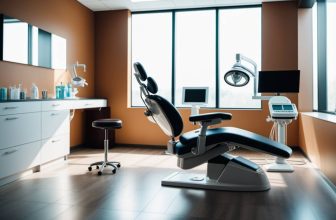
Are you curious about how many succedaneous teeth there are? Succedaneous teeth are permanent teeth that replace deciduous teeth. They are different from primary teeth, which are temporary and eventually fall out. Succedaneous teeth include all incisors, canines, and premolars, replacing their primary predecessors after exfoliating.
There are 20 succedaneous teeth in total, and they begin to form as early as 24 weeks. These teeth originate from successional laminae, which are specialized structures that give rise to the enamel organ, dental papilla, and dental follicle. Succedaneous teeth are larger and more mineralized than primary teeth, with thicker enamel and dentin. They are also more yellowish in color and have a more complex structure that enables them to withstand the forces of mastication.
Understanding the number and types of teeth in your mouth is essential for maintaining good oral health. By knowing how many succedaneous teeth there are, you can better care for them and prevent dental problems such as decay and gum disease. Keep reading to learn more about the anatomy of teeth and how to keep them healthy and strong.
What Are Succedaneous Teeth?
If you’re wondering what succedaneous teeth are, you’ve come to the right place. This section provides you with a brief overview of succedaneous teeth, their definition, and their types.
Definition of Succedaneous Teeth
Succedaneous teeth are the permanent teeth that replace the primary teeth. These teeth begin to develop as early as 24 weeks and continue to form until the age of 12 to 13 years old. There are 20 succedaneous teeth in total, and they are divided into four types: incisors, canines, premolars, and molars.
Types of Succedaneous Teeth
The four types of succedaneous teeth differ in shape, size, and function. Here’s a brief overview of each type:
Incisors
Incisors are the front teeth located in the upper and lower jaw. They have a thin, sharp edge that helps to cut food. There are eight incisors in total, four in the upper jaw and four in the lower jaw.
Canines
Canines are pointed teeth located next to the incisors. They have a sharp, pointed edge that helps to tear food. There are four canines in total, two in the upper jaw and two in the lower jaw.
Premolars
Premolars are located between the canines and molars. They have a flat surface that helps to crush and grind food. There are eight premolars in total, four in the upper jaw and four in the lower jaw.
Molars
Molars are the back teeth located in the upper and lower jaw. They have a large, flat surface that helps to grind and crush food. There are eight molars in total, four in the upper jaw and four in the lower jaw.
In conclusion, succedaneous teeth are the permanent teeth that replace the primary teeth. They come in four types: incisors, canines, premolars, and molars, each with a different shape and function. Knowing the difference between these types of teeth can help you better understand your oral health and how to take care of your teeth.







